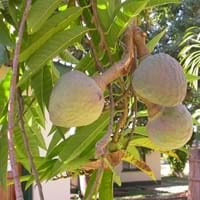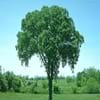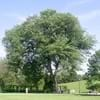Life Span
Perennial
Perennial
Origin
Asia, Caribbean, Central America
Australia
Types
Not Available
Not Available
Number of Varieties
Not Available
Habitat
secondary forest, Tropical Forests
Scrubs, tussock grasslands, Upland savannas
USDA Hardiness Zone
3-8
10-11
Sunset Zone
1a, 1b, 2a, 2b, 3a, 3b, 4, 5, 6, 7, 8, 9, 10, 11, 12, 13, 14, 15, 16, 17
8, 9, 12, 13, 14, 15, 16, 17, 18, 19, 20, 21, 22, 23, 24
Habit
Pyramidal
Upright/Erect
Flower Color
Light Yellow
Lemon yellow
Flower Color Modifier
Bicolor
Bicolor
Fruit Color
Gray Green, Sandy Brown
Gray Green
Leaf Color in Spring
Green
Blue Green
Leaf Color in Summer
Dark Green
Blue Green
Leaf Color in Fall
Yellow, Light Yellow, Yellow green, Sandy Brown, Ivory
Blue Green
Leaf Color in Winter
Not Available
Blue Green
Leaf Shape
Lanceolate
Long Narrow
Plant Season
Spring, Summer, Fall
Spring
Sunlight
Full Sun, Partial Sun
Full Sun
Type of Soil
Clay, Loam
Loam, Sand
The pH of Soil
Acidic, Neutral, Alkaline
Acidic, Neutral, Alkaline
Soil Drainage
Well drained
Well drained
Bloom Time
Early Summer
Spring, Late Winter
Tolerances
Pollution, Drought
Drought
Where to Plant?
Ground
Ground
How to Plant?
Grafting, Seedlings
Seedlings
Plant Maintenance
Medium
Medium
Watering Requirements
Average Water Needs
Do not water excessively
In Summer
Lots of watering
Lots of watering
In Spring
Moderate
Moderate
In Winter
Average Water
Average Water
Soil pH
Acidic, Neutral, Alkaline
Acidic, Neutral, Alkaline
Soil Type
Clay, Loam
Loam, Sand
Soil Drainage Capacity
Well drained
Well drained
Sun Exposure
Full Sun, Partial Sun
Full Sun
Pruning
Prune in the growing season, pruning needed for strong structure, Remove dead branches
Remove dead or diseased plant parts, Requires little pruning
Fertilizers
All-Purpose Liquid Fertilizer, Compost, High phosphorus
All-Purpose Liquid Fertilizer, No fertilizers needed
Pests and Diseases
Aphids, Downy mildew, Leaf rust, Mites, Squirrels
Insects, Root rot
Plant Tolerance
Salt and Soil Compaction, Sun
Drought
Flowers
Insignificant
Showy
Flower Petal Number
Single
Single
Foliage Texture
Coarse
Fine
Foliage Sheen
Glossy
Matte
Attracts
Butterflies, Hummingbirds, Not Available, Squirrels
Butterflies
Allergy
Nausea, Vomiting
Asthma, Eye irritation, Headache, Nose Irritation, Throat itching, Vomiting
Aesthetic Uses
Not Available
Showy Purposes
Beauty Benefits
Anti-ageing, Maintains teeth healthy, Remove blemishes
Not Available
Environmental Uses
Air purification, Food for animals, Food for birds, Shelter for wildlife
Air purification, soil stabilisation
Medicinal Uses
Antibiotic, anti-cancer, Anti-oxidant, Cardiovascular problems, Diarrhea, Fever, Improve heart health
Not Available
Part of Plant Used
Fruits
Flowers, Sap, Seeds
Other Uses
Culinary use, Grown for shade, Oil is used in perfume, soaps, creams, etc., Used for its medicinal properties
Used as a dye, Wood is used fore making tools
Used As Indoor Plant
No
No
Used As Outdoor Plant
Yes
Yes
Garden Design
Feature Plant, Fruit / Fruit Tree, Shade Trees
Shade Trees, Street Trees
Botanical Name
Annona reticulate
ACACIA aneura
Common Name
wild-sweetsop, bullock's-heart, ox-heart
Mulga, True Mulga
In German
Netzannone
Mulga
In French
cachiman, cœur de bœuf
Mulga
In Spanish
Annona reticulata
Mulga
In Portuguese
coração-de-boi
Mulga
In Polish
Flaszowiec siatkowaty
Mulga
Phylum
Magnoliophyta
Magnoliophyta
Class
Magnoliopsida
Magnoliopsida
Order
Magnoliales
Fabales
Family
Tiliaceae
Fabaceae
Clade
Angiosperms, Magnoliids
Angiosperms, Eudicots, Rosids
Tribe
Annoneae
Not Available
Subfamily
Annonoideae
Not Available
Number of Species
Not Available
Importance of Ramphal and Mulga Tree
Want to have the most appropriate plant for your garden? You might want to know the importance of Ramphal and Mulga Tree. Basically, these two plants vary in many aspects. Compare Ramphal and Mulga Tree as they differ in many characteristics such as their life, care, benefits, facts, etc. Every gardener must at least have the slightest clue about the plants he wants to plant in his garden. Compare their benefits, which differ in many ways like facts and uses. The medicinal use of Ramphal is Antibiotic, anti-cancer, Anti-oxidant, Cardiovascular problems, Diarrhea, Fever and Improve heart health whereas of Mulga Tree is Not Available. Ramphal has beauty benefits as follows: Anti-ageing, Maintains teeth healthy and Remove blemishes while Mulga Tree has beauty benefits as follows: Anti-ageing, Maintains teeth healthy and Remove blemishes.
Compare Facts of Ramphal vs Mulga Tree
How to choose the best garden plant for your garden depending upon its facts? Here garden plant comparison will help you to solve this query. Compare the facts of Ramphal vs Mulga Tree and know which one to choose. As garden plants have benefits and other uses, allergy is also a major drawback of plants for some people. Allergic reactions of Ramphal are Nausea and Vomiting whereas of Mulga Tree have Asthma, Eye irritation, Headache, Nose Irritation, Throat itching and Vomiting respectively. Having a fruit bearing plant in your garden can be a plus point of your garden. Ramphal has no showy fruits and Mulga Tree has no showy fruits. Also Ramphal is not flowering and Mulga Tree is not flowering . You can compare Ramphal and Mulga Tree facts and facts of other plants too.





